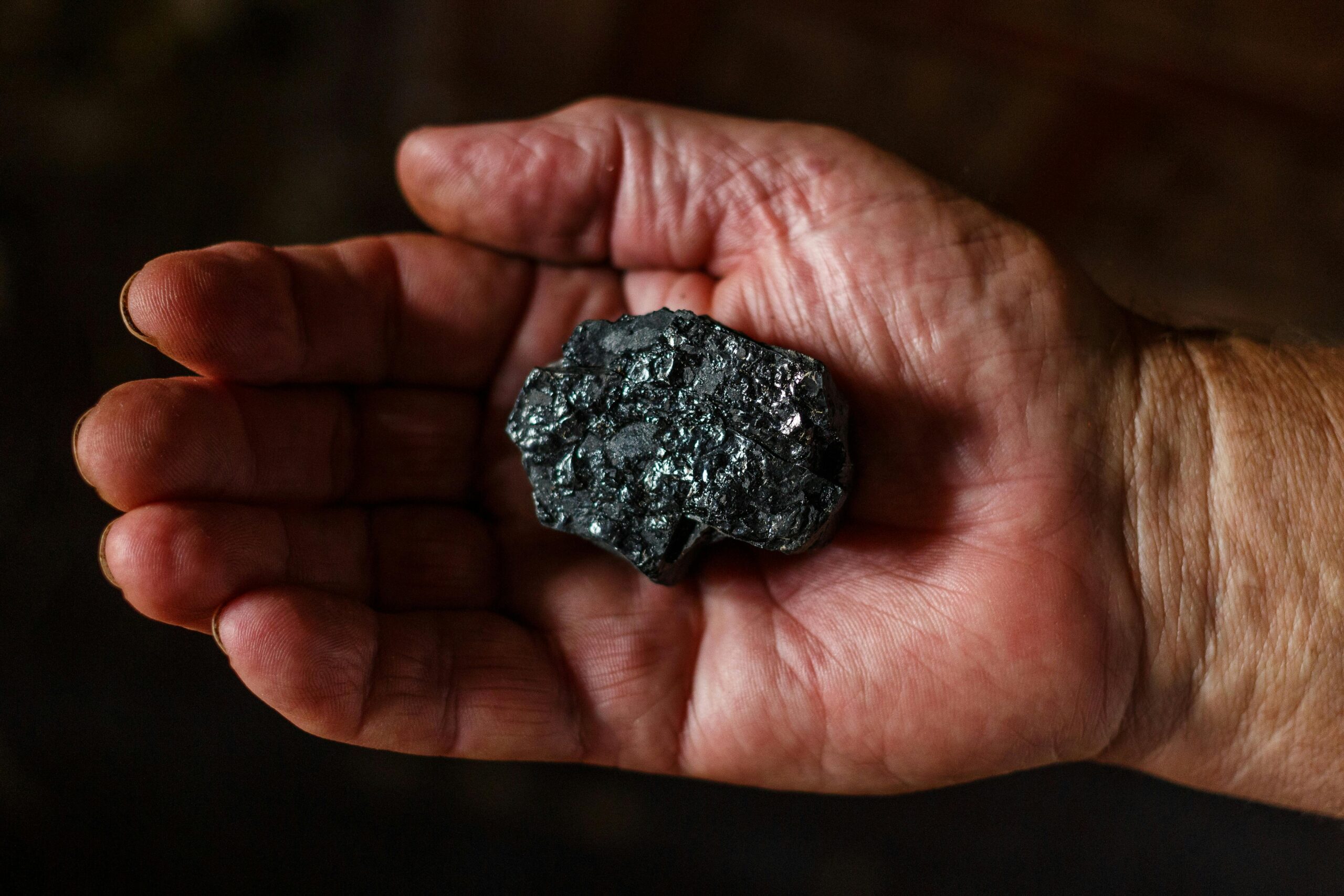Scientists Discover ‘Limitless’ Energy Source That Could Power the Country for 60,000 Years

What if the key to solving our global energy crisis was lying beneath our feet all along? Imagine a world where energy is as abundant as the air we breathe, and the power to fuel our lives comes from a source that could last for millennia. It’s a world where we no longer have to rely on fossil fuels, a world where our homes, industries, and even vehicles run on energy that is cleaner, safer, and virtually limitless.
This may no longer be a distant dream. Recent discoveries out of China have unveiled a potential energy source that could change everything — an energy source so vast that it could power an entire nation for 60,000 years. That source? Thorium.
While the name might not be familiar to most, thorium is now at the forefront of nuclear energy research, offering us the promise of a cleaner, more sustainable future. But what exactly is thorium, and how can it fuel our world for thousands of years to come? Let’s explore this game-changing discovery and what it could mean for our future.
The Power of Thorium: A Game-Changer in Energy Production

In the remote expanse of Inner Mongolia, within the confines of the Bayan Obo mining complex, scientists have made a discovery poised to redefine the global energy landscape. Here lies an estimated one million tonnes of thorium, a slightly radioactive metal that, until now, has been overshadowed by its more famous cousin, uranium. This vast reserve of thorium could potentially supply China with energy for an incredible 60,000 years, offering a staggering testament to its capability and abundance.
This discovery was revealed in a declassified report from a national geological survey, igniting excitement and speculation about the future of energy. Thorium’s appeal lies in its ability to produce a cleaner, safer form of nuclear power compared to traditional methods. Unlike uranium, thorium reactors produce minimal radioactive waste and are not prone to catastrophic meltdowns, making them a preferable choice in the pursuit of sustainable and safe energy sources.
What makes this breakthrough even more significant is the efficiency of thorium. It is estimated to be able to generate 200 times more energy than uranium when used in a molten salt reactor. This type of reactor, which operates at high temperatures but at atmospheric pressure, reduces the risk of accidents and increases the efficiency of power generation. The potential of thorium to transform the energy sector lies not just in its abundance or safety, but in its promise to deliver a continuous, reliable power supply with minimal environmental impact.
As the world grapples with the challenges of climate change and the depletion of traditional fossil fuels, the discovery of such a substantial thorium reserve offers a glimmer of hope. It represents a pivotal shift towards an era where clean energy could dominate, reducing greenhouse gas emissions and offering a sustainable alternative to the fossil fuels that currently power our cities and industries.
China’s Role in Pioneering Thorium Energy
China is not just sitting on its discovery of thorium; it is actively working to harness its potential in a way that could transform global energy systems. The country is at the forefront of thorium research, building the world’s first-ever thorium molten-salt reactor. This demonstration project, scheduled to be operational by 2029, will be a critical step in proving that thorium can be used to generate sustainable, reliable energy on a large scale.
The reactor will be built in the Gobi Desert — a location that symbolizes China’s bold ambition to lead the way in clean energy technology. The project is not just a scientific experiment; it’s a statement of intent. If successful, this reactor could serve as a model for other countries looking to reduce their dependence on fossil fuels and transition to safer, more sustainable energy sources.
Molten-salt reactors, which are the key to unlocking thorium’s potential, have several distinct advantages. Unlike traditional nuclear reactors, which rely on solid fuel rods, molten-salt reactors use liquid salt as both the fuel and the coolant. This design makes the reactor safer, more efficient, and less prone to catastrophic failure. The molten salt can operate at much higher temperatures than conventional reactors, which means it can produce energy more efficiently. And because the fuel is in liquid form, it can be easily circulated to remove excess heat, preventing the risk of overheating or meltdown.
But perhaps the most compelling reason why molten-salt reactors are a game-changer is that they produce far less nuclear waste than conventional reactors. And the waste they do produce is much easier to manage and has a shorter half-life. This could drastically reduce the long-term environmental impact of nuclear energy, addressing one of the biggest concerns surrounding traditional nuclear power.
China’s commitment to thorium energy is more than just a technological breakthrough. It is an investment in energy self-sufficiency, economic growth, and global leadership. As China leads the way in developing thorium-based energy, it sets the stage for other countries to follow suit, creating a ripple effect that could redefine the future of energy production worldwide.
How Thorium Could Power Our Future

The potential of thorium lies in its innovative application through molten-salt reactors (MSRs), a technology that could redefine nuclear energy. These reactors use thorium dissolved in molten salt, which serves both as the fuel and the coolant, providing significant advantages over traditional nuclear reactors. Operating at higher temperatures but lower pressures than conventional reactors, MSRs reduce the risk of explosions and improve energy conversion efficiency.
One of the most exciting features of thorium MSRs is their ability to “breed” fuel. In this process, thorium absorbs neutrons to transform into uranium-233, which undergoes fission to produce energy. This breeding cycle extends the life of the fuel, making thorium a nearly inexhaustible source of energy. As a result, MSRs can maximize the energy extracted from thorium, offering a more sustainable and efficient energy solution compared to uranium-based reactors.
The scalability of MSRs opens up a wide range of possibilities, from small modular reactors that could power individual communities to large plants capable of energizing entire cities. This flexibility makes MSRs an ideal option for regions with limited infrastructure for traditional large-scale nuclear plants. Additionally, by producing far less long-lived radioactive waste and operating at higher efficiencies, thorium MSRs could play a crucial role in reducing global carbon emissions and combating climate change.
Overcoming the Hurdles of Thorium’s Promise

While the promise of thorium as a limitless energy source is incredibly exciting, it’s important to recognize that no technology comes without its hurdles. The road ahead for thorium energy is filled with both immense opportunities and significant challenges — but these are not obstacles that we cannot overcome.
The Opportunities
The most obvious opportunity lies in thorium’s ability to provide a virtually inexhaustible source of energy. As we face an increasingly urgent climate crisis, the need for clean, renewable energy has never been more pressing. Thorium offers an answer. Unlike fossil fuels, which pollute the environment and are finite, thorium can be harnessed to create massive amounts of energy with minimal environmental impact. Its reactors produce less radioactive waste, and the waste they do generate is far easier to handle than the byproducts of uranium-based reactors. This means that thorium could play a major role in reducing the toxic legacy of nuclear power, all while meeting the world’s growing energy demands.
Moreover, thorium’s abundance makes it an ideal solution for countries looking to achieve energy independence. No longer would nations need to rely on the geopolitical volatility surrounding fossil fuels. With thorium, a vast, clean energy supply could be right at their fingertips. Countries like China, with large thorium reserves, could power their future for thousands of years, offering stability and security in a world that desperately needs both.
The Challenges
However, thorium is not without its challenges. The extraction process itself is costly and energy-intensive. While thorium is more abundant than uranium, it is not as easy to mine and refine. Currently, it’s typically extracted as a by-product of rare-earth mining, which means that significant infrastructure and investment are needed to extract and process it efficiently. This makes the transition to thorium-based energy an expensive endeavor, at least in the short term.
Furthermore, there are still technical challenges in developing thorium reactors. Molten-salt reactors, though safer and more efficient, require significant research and development. The technology is still in its infancy, and while China is leading the charge, other nations are also experimenting with the concept. However, perfecting the design, scaling it up, and making it commercially viable will require time, expertise, and financial backing.
Another concern is the handling of uranium-233, a by-product of thorium reactors that is fissile and could potentially be used in nuclear weapons. Though experts argue that thorium reactors pose less of a proliferation risk than traditional nuclear power, there is still caution around the security implications of handling such materials. Ensuring that thorium technology is used responsibly and securely will be crucial in the global adoption of this energy source.
Thorium’s Promise — A New Era for Energy
Thorium is not just a discovery; it’s a promise of a future where energy no longer limits our potential. This element has the ability to power nations for thousands of years, offering us a clean, abundant, and safer alternative to the fossil fuels and uranium that have defined our energy systems for so long. With thorium, we are standing at the edge of an energy revolution — one that could transform how we power our world and protect our planet.
However, the path to realizing this potential is not without its challenges. While thorium offers an incredible opportunity, it requires dedication, innovation, and collaboration to make it a mainstream energy source. The technology is still in its early stages, and there are hurdles to overcome, from extraction methods to safety concerns. But the possibilities far outweigh the obstacles, and if we embrace thorium now, we could reshape the future of global energy.
The potential of thorium is clear — the question is whether we will have the foresight and the courage to act on it. The opportunity to build a sustainable, limitless energy future is before us. It’s time to harness that power and turn thorium’s promise into reality.
Featured Image Source: Pexels
Source:
- Waltz, E., & Chiu, Y. (2024, December 30). Why China is building a Thorium Molten-Salt reactor. IEEE Spectrum. https://spectrum.ieee.org/chinas-thorium-molten-salt-reactor
Loading...






